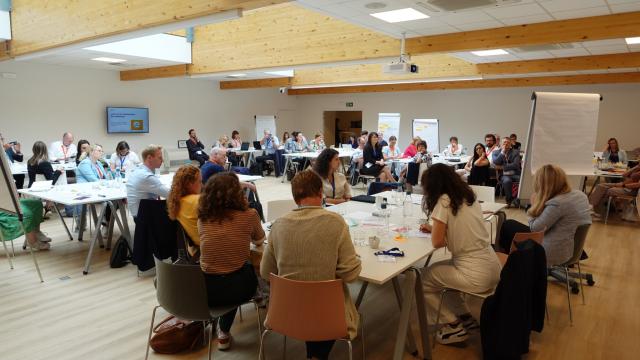As EU Year of Skills wraps up, Commission sets out an action plan to tackle labour and skills shortages

Labour and skills shortages are on the rise in all EU Member States, and improving labour market participation is at the very heart of solving this problem. Despite advances in overall EU employment rate, skills gaps are apparent. This is especially the case for disadvantaged groups like refugees and migrants, women, and young people.
Notably, Eurostat estimates that 21% of today’s population aged 20-64 remains inactive, and requires targeted support to enter the labour market. In effect, this means that a substantial untapped potential is left behind.
The Big Short: how large is the gap we're staring at?
Skills shortages are reported by companies across all sizes and sectors in the EU economy, with particular challenges for SMEs. In one recent Eurobarometer study, 4 out 5 SMEs declared that it is difficult for them to find workers with the right skills, and more than half found it difficult to retain skilled workers. In an attempt to measure and bridge this gap, the Commission has identified 42 occupations that it considers as EU-wide shortage occupations. Labour shortages continue to persist across all sectors.

The transition to a greener and more digital economy is already making an impact on skills as we know them, and this can trigger further mismatch between skills and the demands of the labour market. Only in the renewable energy sector, estimates point to 3.5 million new jobs opening up by 2030. The 2023 Employment and Social Developments in Europe (ESDE) report projects that investment needs for retraining, reskilling and upskilling in manufacturing of strategic net-zero technologies are estimated between 1.7 billion EUR and 4.1 billion EUR up to 2030. This corresponds to between 198 000 additional jobs and 468 000 additional jobs under different scenarios.
The increased uptake of advanced technologies like AI and big data is also projected to boost employment, but exacerbate skills shortages.
Getting on board those left behind
A large part of the unrealised potential of the EU labour market depends on activating societal groups lagging behind the digital transition. This is especially the case for women, lower-skilled adults, refugees and migrants, and older and younger people. The lower labour market participation of these groups leads to further shortages and bottlenecks. The potential contribution of women to increasing the activity rate is the highest among those groups, adding around 17.3 million more active people by 2030.

The action plan: a roadmap to ensure success
The EU is not starting from scratch. The action plan is a key deliverable of the European Year of Skills, an EU-wide umbrella campaign with the objective of ensuring people have a quality job, and the skills to excel in it. It also builds on the numerous policy and funding mechanisms already in place at EU and Member States level, as well as by social partners who have been consulted on the plan. It furthermore builds on initiatives of the European Pillar of Social Rights Action Plan, policy guidance in the framework of the European Semester and EU funding support.
Under the Pact for Skills, 3.5 million workers have received training. And funding follows suit. The EU is investing around €65 billion in skills programmes, notably via the Recovery and Resilience Facility (RRF) and European Social Fund Plus (ESF+). In the words of Nicolas Schmit, Commissioner for Jobs and Social Rights,
"Europe’s labour market is at a crossroads: businesses are struggling to find workers to fill their vacancies, which is holding them back. We have an opportunity to bring more people onto the labour market, prepare them for the jobs in demand, and to boost Europe’s competitiveness. This Commission has introduced several measures to increase training, improve working conditions, and empower social partners, but more can and should be done. With everybody’s commitment, we can turn a corner on skills and labour shortages, and build an economy that works for people".
Implementing this action plan is crucial for achieving the 2030 EU headline targets on skills and employment, aiming for 78% of employment and 60% adult participation in yearly training. There are five areas for action under the plan:
- Supporting underrepresented people to enter the labour market
- Providing support for skills development, training and education
- Improving working conditions
- Improving fair intra-EU mobility for workers and learners
- Attracting talent from outside the EU
Further reading
Download the Communication of the European Commission on the action plan. For a cleaner and more user-friendly view, download the Factsheet. Make sure to follow the latest developments straight onto the European Commission's website.




